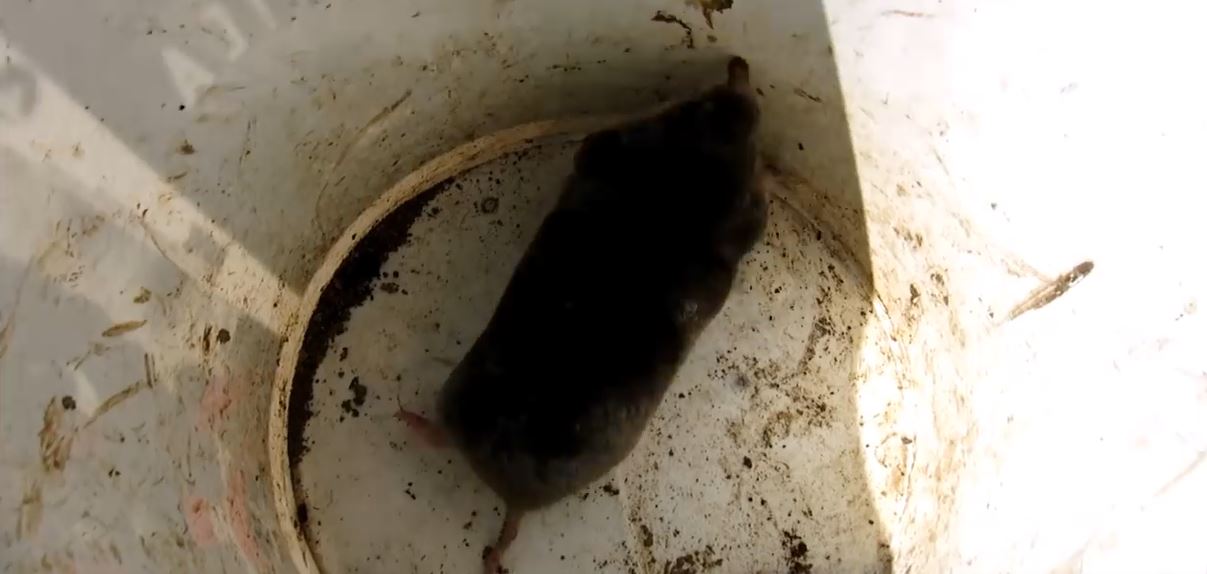Mole Repellent

If your land is attractive to moles, then you will want to come up with some sort of system to keep them away. Repellents typically seem like the easy solution, but it will not always work as well as many people would think. Before you waste time and money using repellent to stop moles from coming onto your property, take the time to learn more about your various options so you know whether or not the repellent would work and how to use it.
Does It Work?
Homeowners don't like to hear it, but mole repellents are not typically very effective. Like repellents for other nuisance wildlife, they are marketed as working well, but this is typically just a ploy to make money. Some people have noticed positive results from using repellents, but this is rare and may even be due to another factor or action, such as adjusting the soil on their property.
If you ask a reputable expert if mole repellent works, they will likely explain it to you in a simple way. Nearly all repellents, both store-bought and homemade, require you to put them on the surface of the ground. Moles spend almost their entire lives below ground in their nest or burrows. They live underground, look for food in the soil, and eat underground. This means that even if the animals didn't like the smell or flavor of a repellent applied to the surface, they are unlikely to ever come into contact with it.
Planting The Right Greenery
Among natural mole repellents that you can provide yourself, some of the most common are plants that you would simply add to key locations on your property. Options include fritillarias, alliums, marigolds, daffodils, castor beans, and mole plant. If you go with this method, keep in mind that the plant will be along the surface of the soil with only the root extending into the ground. Since moles spend all their time underground, this means they are unlikely to even notice you added an unpleasant plant to your property. You can, however, still give this method a try, particularly if you enjoy. Instead of thinking of them as a guaranteed mole repellent, consider them as a beautiful addition to your garden that may keep pests away.
You should be particularly careful when using castor bean plant or mole plant since both are known to be poisonous. This means that if you have children or pets, you should consider a different method of keeping the moles away.
Castor Oil
Instead of planting castor beans, you can also make a natural repellent with varying results from castor oil. Try mixing six ounces of the oil with two tablespoons. This will become a concentrate that you can dilute with water before spreading around your property. Remember it will need to be reapplied every few weeks and after it rains.
Store-Bought Repellent
The majority of store-bought repellents you find for moles will contain castor oil although others may have different ingredients. Keep in mind, however, that unless you apply the repellent to mole tunnels or under the surface of the soil, they will not have any impact on whether or not a mole makes your property into a home. When looking at store-bought mole repellents, always be sure to carefully read the container. You want to check for dangerous or toxic chemicals as these can pollute the groundwater or pose a danger to children and/or pets.
Electronic Repellents
Depending on where you look, you can find an incredible range of electronic or mechanical repellents. There are spikes, for example, that you can put in the ground to emit a sound. The sound is theoretically at the right frequency to dramatically annoy moles because of their great sense of hearing. This method does not always work in practice, however. There are also sound machines that operate on a similar principle but remain above ground. In addition to just being ignored by the moles, the animal may not even notice them if the machine is placed on the surface.
What To Do
Since mole repellents don't work well, you may be wondering how you can deter these pesky critters from turning your yard into a home. If you currently water your lawn more than once a week, you should reduce the frequency with which you do so. Damp soil is much easier for moles to burrow through. It also tends to attract earthworms and grubs, two of the favorite foods for moles.
You can also add a fence or piece of metal mesh to strategic areas to keep moles away. When using this method to repel moles, remember that they are excellent diggers. You will need to make sure the fence extends about two feet underground to prevent moles from burrowing underneath. It should also go about half a foot above ground so they won't climb over.
Read the How to get rid of moles page for helpful information and to learn more about Mole Repellent

